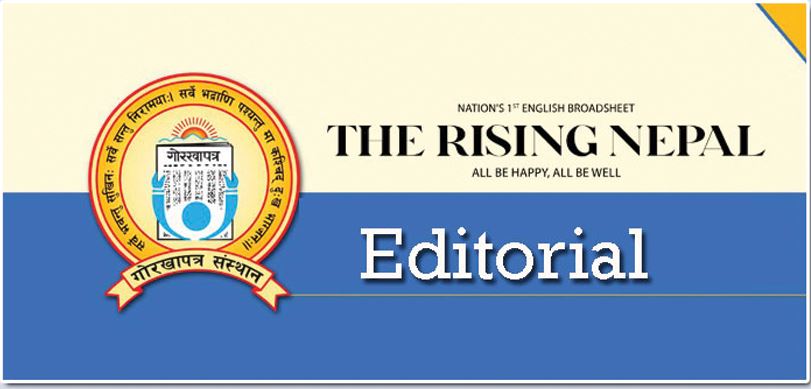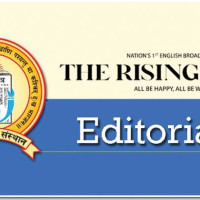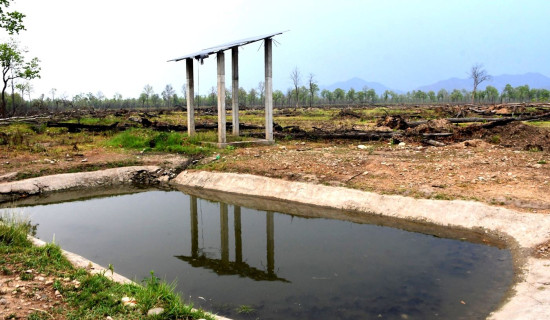- Thursday, 31 July 2025
Air Pollution Perils
Nepal’s identity as a pristine Himalayan nation is under constant threat. Its snowy mountains and glaciers are melting fast, with disastrous consequences for the people living in its vicinity and beyond. Climate change adds another worry to the nation’s socio-economic plight. The country could not progress in industrial development, turning its economy fragile and unstable. It is an irony that it has to suffer the climate consequences invited by industrialised nations. Greenhouse gas emissions, generated by developed nations, have dealt a lethal blow to it. The country is not in a position to single-handedly fight this climatic scourge that imperils our entire planet. Its desperate plea for climate finance and climate justice remains unaddressed.
Amid the increasing climate crisis, Nepal has put its best foot forward to protect its ecology, mountains and rivers. It has increased its forest area by more than 46 per cent, the highest in South Asia. Forests absorb carbon dioxide from the atmosphere, contributing to the mitigation of greenhouse gas and temperature rise. Despite growing greenery and other climate measures, air pollution has badly affected the country as it has become the number one risk factor for death and disability, according to a World Bank report made public on Tuesday. Air pollution and climate change are closely intertwined, as the pollutants that cause air pollution exacerbate the climate crisis. Both form a vicious cycle, amplifying each other.
Growing incidents of wildfires are attributed to climate change, and these incidents produce significant amounts of air pollutants, including particulate matter, nitrogen dioxide and sulphur dioxide. Of them, PM2.5, tiny particles with diameters less than 2.5 micrometres, are detrimental to health. Sources of PM2.5 include vehicle emissions, burning wood, dust storms, wildfires, construction and industrial processes. The Air Quality Index (AQI) below 50 is considered normal and anything above 300 is dangerous for human health. However, Kathmandu's AQI has frequently crossed 200 to 300, making it one of the top ten most polluted cities in the world.
The WB's study states that Kathmandu Valley and the Tarai have become Nepal’s air pollution hotspots. It reduces life expectancy by 3.4 years for the average Nepali and causes approximately 26,000 premature deaths annually, affecting labour productivity, tourism, and the aviation sector. Its economic loss is estimated at more than 6 per cent of Gross Domestic Product (GDP) each year. It is pertinent to pay heed to WB's suggestions to meet the clear air target that requires a multi-pronged strategy. Policy intervention and adequate investment are needed to maintain air quality, emphasising the most cost-effective solutions. The government has imposed stricter industrial emission standards to promote electric transport.
Works need to be done on multiple fronts to reduce the effects of emissions released from vehicles, industries, household cooking and forest fires. It is necessary to support cleaner technology and fuel adoption in industries, including electric and pellet boilers and furnaces in small and medium enterprises. As pollutants travel across the borders, Nepal should work jointly with neighbours to combat air pollution. The Kathmandu Valley's bowl-shaped location has allowed pollutants to concentrate here. Fighting air pollution should be a part of the broader climate agenda. It is only with an integrated approach that the country will be able to maintain clean air and minimise its dangerous consequences.








-square-thumb.jpg)








